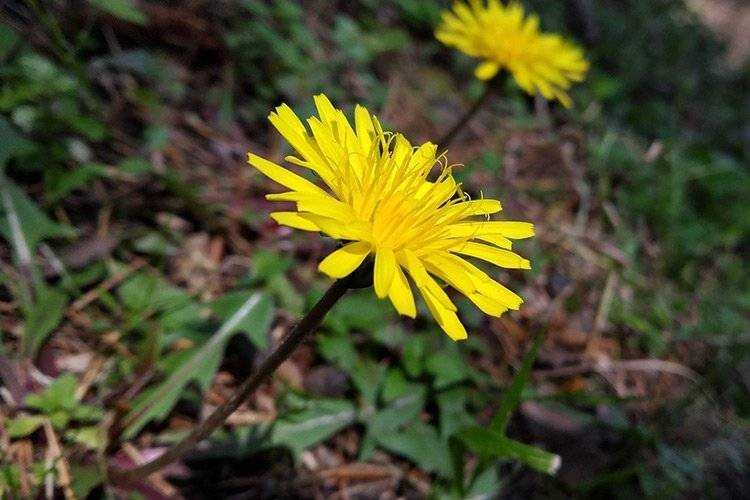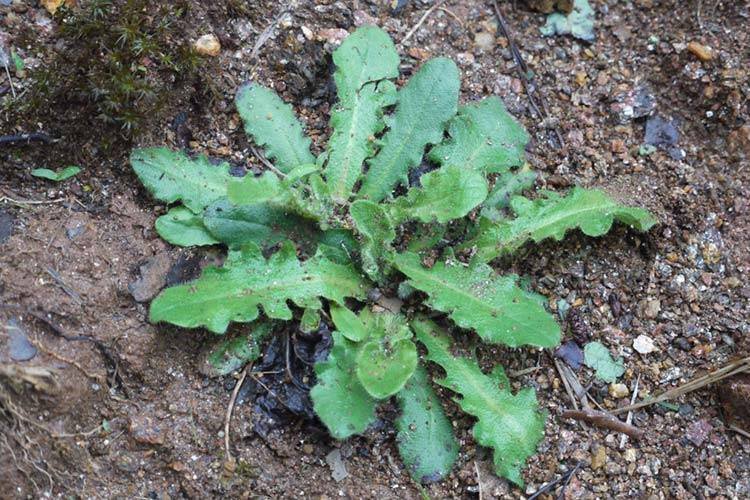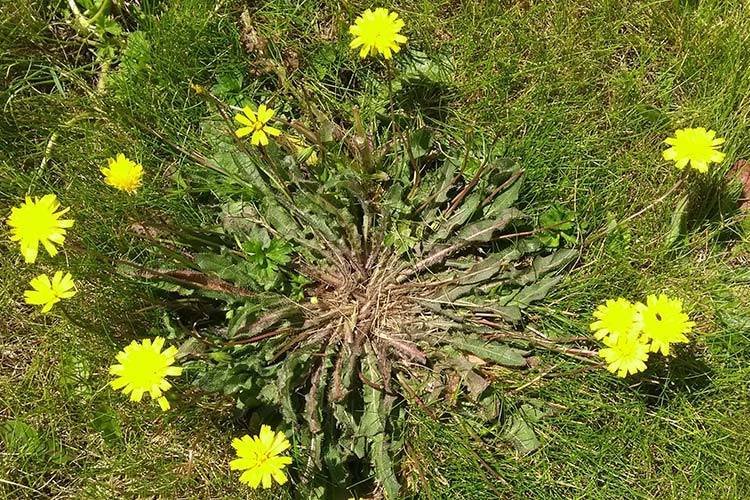Beautiful Plants For Your Interior
Common Catsear

Quick Weed Facts:
Shape: Low to short plant, which has a basal rosette of wavy-edged leaves. The plant is covered with many stiff, unbranched hairs that are raised on pimples.
Colour: Flower Yellow
Family: Asteraceae Genus: Hypochaeris
Main Species: Common Catsear (Hypochaeris radicata)
Other Names: Hairy Cat’s ear, Flatweed, False dandelion, Spotted Catsear
Most Active Growing: June through to September
Weed Type: Perennial
We should state from the beginning that Common Catsear (Hypochaeris radicata) is not the same as dandelions and we will detail the differences in this article.
Flatweed, cat’s-ear, false dandelion, hairy cat’s ear, also known as common catsear (Hypochaeris radicata), is a cat’s-ear-shaped plant with fine hair on its leaves that resembles a cat’s ear in shape and appearance. It is a common lawn weed in the UK that is usually present in neglected lawns.
The common catsear or false dandelion is a plant which looks similar to the common dandelion (Taraxacum officinale), it is distinguished from the dandelion by the fact that its flower stalks are solid and frequently fork into two or more flowers, if broken or snapped the stalks contain a milky sap. Because the dandelion (Taraxacum officinale) is the more common dandelion, the false dandelion is commonly confused with it.
Also, the flowers/petals of dandelions have rounded ends, whereas those of common catsear are thicker and are distinctly flat at the end and around ¾”-2″ (2-5cm) in diameter.
The catsear has toothed or wavy-edged leaves with rounded lobes, the leaves grow up to 6″ (25cm) long and are produced from a flat basal central rosette rather than stalks. This herbaceous perennial plant returns year after year unless it is removed.

Common Catsear ‘Rosette’ With Toothed or Wavy Edged Leaves
Common Catsear Weed Control
As stated it is a common plant across Britain, as common Catsear is found in roadside verges, lawns, and other grassy areas, it has a very long ‘tap root’ that penetrates the ground to around 12″ (30cm) so can normally withstand very dry conditions, especially in well-drained soils. Reproduction is through seed and mature plants quickly form within a few months.
Due to its flat basal rosette, catsear can also adapt to ‘low cut’ mowing if you are not careful and are vigilant to the plant’s intrusion. Thus prevention and control are the best solutions to this common weed.
Common Catsear Weed Removal
As this problematic weed will undoubtedly as gardeners be found in your grass/lawn, then with regular mowing will help prevent Catsear from spreading, provided that the seed heads are prevented from developing. Also, maintain good grass health by providing a balanced diet and irrigating during dry periods to maintain good grass coverage and reduce stress.
Weed removal can be undertaken by hand and is performed with a daisy grubber or small garden fork. The most effective results are achieved when the roots are removed when the ground is moist, as the whole root must be removed. This plant will keep regenerating if any of the roots remain in the soil.

The Leaves From Common Catsear are Produced From a Flat Basel Central Rosette Rather Than Stalks.
Common Catsear WeedKiller
Common Catsear are ‘singular’ plants and thus make it easier to spot spray with a selective systemic weed killer like Round Up Optima or Resolva Lawn Weedkiller similar.
A blanket treatment with a herbicide may be required to control Catsear in heavy infestations.
Therefore, to keep chemical usage to a minimum, try and treat the weed exclusively on areas of the lawn or turf affected. Catsear can be quite stubborn, so it may be necessary to make two applications to adequately control your Catsear infestation. The second application should be made around 6 weeks after the first one.
N.B If you have a heavy infestation you should seek professional assistance in weed removal, as licenced professionals have access to more potent herbicides not available to the non-professional.
Is Catsear Poisonous?
It is unclear whether Catsear’s toxic effects are a result of size differences or physiological differences between species that ingest them. Whether or not the plant is toxic to dogs or cats is also unknown as no specific studies have been carried out that we can find.
In Japan and even Greece, the common Catsear is grown as a garden green! It has also been said by Naturescape that the leaves of the catsear can be eaten raw in salads, boiled, or used in stir-fries, and roots can be roasted and ground up and used as a coffee substitute; so human consumption of catsear is indeed considered safe or at the very least having a low possibility of the severity of toxic poisoning if this is found to be correct.
Horses, however, seem to be most susceptible to poisoning if common catsear is digested in quantity. It has a potentially debilitating condition called Stringhalt, which occurs when horses eat the plant in excess, from ingestion.
Common Catsear Identification
FAQs
Can Common Catsear Cause Allergies?
Yes, Common Catsear can cause allergies in some people, especially those who are allergic to ragweed or other plants in the daisy family. Symptoms may include sneezing, runny nose, itchy eyes, and skin rash.
If you experience these symptoms after coming into contact with Common Catsear, avoid the plant and consult a doctor if necessary.
Can Common Catsear Be Used As A Natural Dye?
Yes, Common Catsear can be used as a natural dye to produce a yellow colour. The leaves and flowers contain a yellow pigment called lutein, which can be extracted by boiling the plant material in water. The resulting dye can be used to colour fabrics, yarns, and other materials. However, the colour may fade over time and may not be as vibrant as synthetic dyes.
How Tall Does Common Catsear Grow?
Common Catsear can grow up to 30 cm (12 inches) tall and has a rosette of leaves that can be up to 25 cm (10 inches) wide. The plant produces yellow flowers on tall stems that can reach up to 60 cm (24 inches) in height. The flowers are followed by fluffy seed heads that can be carried by the wind.
Catsear Health Benefits
It is said as an herbal remedy, catsear uses include treating kidney problems, urinary tract infections, gall bladder issues, constipation, rheumatism, and liver problems. Its root contains natural cortisone which is used to treat allergies, rashes, and other itchy skin issues in both people and pets.
Disclaimer: The contents of this article are for educational and gardening purposes only. Before using or ingesting ANY herb or plant for medicinal purposes or otherwise, please consult a physician, medical herbalist or other suitable professionals for advice.
Conclusion
With some similarities, Common Catsear could easily be mistaken for Dandelions. The article above provides you with ways to identify the plant and how best to manage common catsear if you find yourself with an infestation.
If you find this page useful, don’t forget to visit our FAQ page for more gardening tips, tricks and information on a whole host of subjects for the home and garden.
Return to UK Garden Weeds
